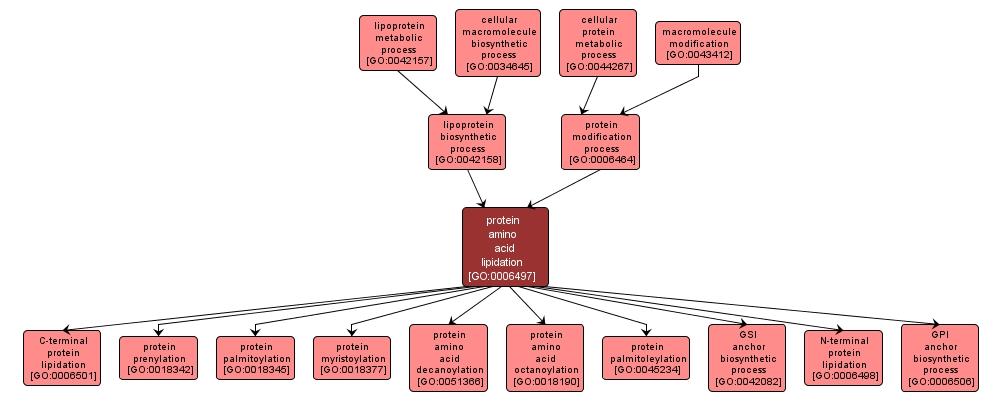GO TERM SUMMARY
|
| Name: |
protein amino acid lipidation |
| Acc: |
GO:0006497 |
| Aspect: |
Biological Process |
| Desc: |
The covalent or non-covalent attachment of lipid moieties to an amino acid in a protein. |
Synonyms:
- GO:0042050
- protein lipidation
- lipid:protein modification
|
|

|
INTERACTIVE GO GRAPH
|














